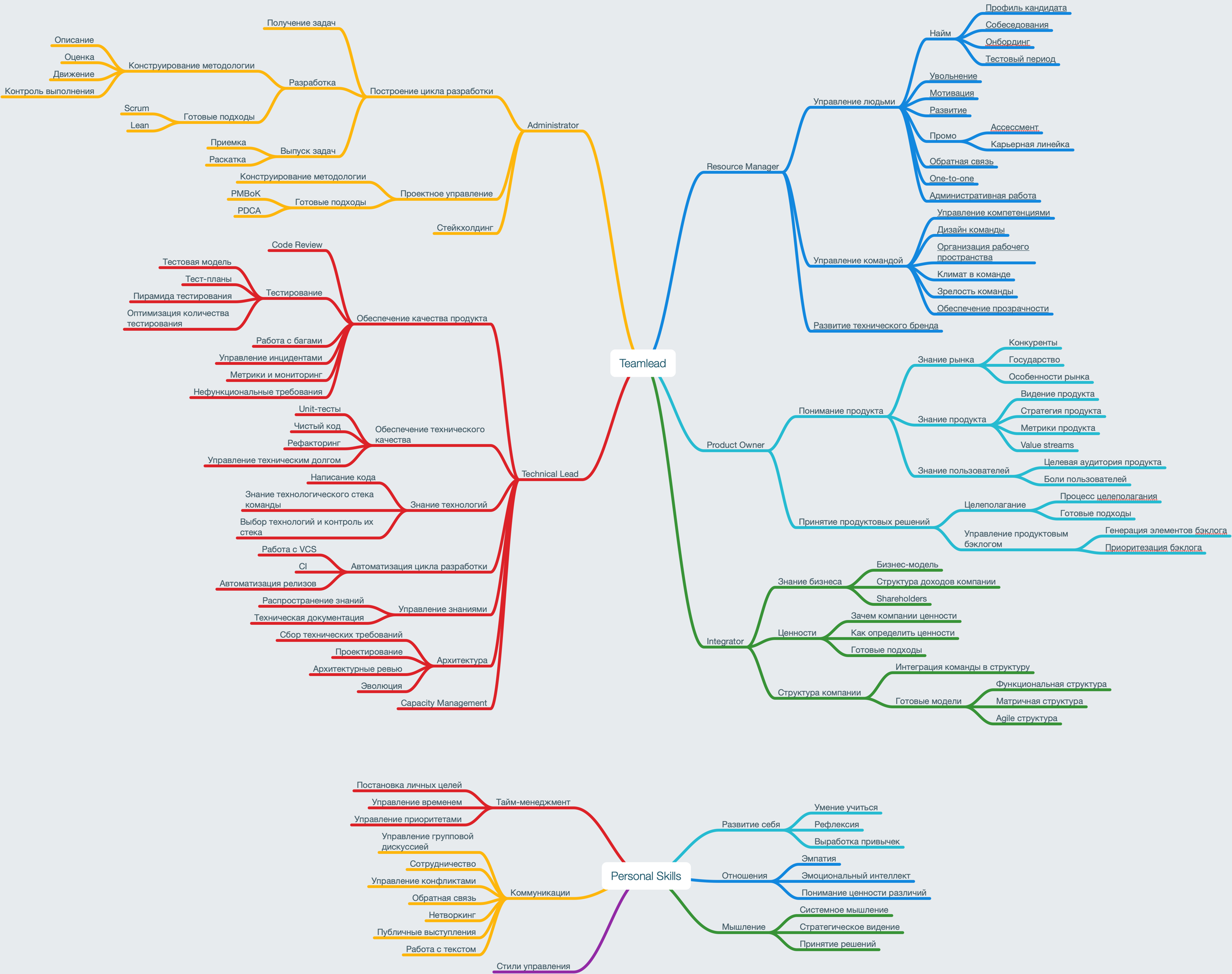What should a team lead: roles, responsibilities and skills

Timlide is a snowflake. When examined in detail, each company takes a different form. Somewhere they expect him to just move tasks around the board, somewhere he will hire and fire, and somewhere he will be asked to simultaneously design the architecture, set business goals and think about the pains of users of the product. In fact, everything is even more complicated. Differences are found not only between different companies, but even within teams located in the same office.
This becomes especially noticeable when a company is faced with one of the following questions: how to interview a team leader, how to evaluate his work, how to draw up a development plan for him. Timlids also frustrate quite a lot - they don’t understand how much their current work experience will remain relevant when moving to a new company, what knowledge and skills gaps exist and how they can be filled. In short, wherever you look, everywhere with team leaders is somehow difficult.
This problem was also encountered by Stas Tsyganov . But this time, instead of dispensing with a simple solution to current problems, we wanted to approach the issue more fundamentally, collect information about expectations from team leaders in different companies and generalize it into a single general model . And, it seems, we did it.
Roadmap
The roadmap contains two sections:
- Roles and responsibilities. A list of high-level work roles and more specific responsibilities and areas of responsibility.
- Personal Skills. Personal skills and qualities that are necessary for certain roles and responsibilities.
This model can be used as you like - to draw up your own development plan, to formulate job descriptions in companies, to create vacancies or conduct interviews. Keep in mind that most likely you do not need all the branches of potential development - and this is normal.
A little about the roles:
- Resource Manager - managing people and teams.
- Administrator - project management and task development process.
- Technical Lead - technology, quality, architecture, automation.
- Product Owner - product, goal, and backlog management.
- Integrator - an understanding of the business, values and structure of the company.
Why roadmap can be trusted
The main problem that I already mentioned is the difference in perception of the role of team lead in different companies. In drawing up the general model, it was impossible to rely solely on our experience in Avito, Tutu and Rambler. It was necessary to research more companies.
We started by collecting information, creating a working group of ten people who shared information about who the team leader is in their case. This group was attended by development managers from both Russian and foreign companies, both from small start-ups and very large institutions. The first brainstorm confirmed our original hypothesis. Despite the large number of differences, all expectations and responsibilities could be generalized into several separate role clusters.
Then we went to work out each role in detail, dividing it into branches and leaves with the immediate responsibilities of a team leader, trying not to simultaneously overload the roadmap and not make it too abstract. Each of the duties is associated with a description in the knowledge base, which discloses the following sections:
- What is this branch?
- Why is a branch important?
- What will happen if you do not do it?
- Who can I delegate it to?
- Behavior examples
- Pumping Methods
We validated the resulting structure through a series of interviews with development managers from different companies. In the interview, we asked a series of questions to find out all the responsibilities of team lead in the company, and at the same time noted them on our roadmap. At the end, we showed the resulting model to the interviewee and performed the final validation. Judging by the results, we almost missed nothing.
How to use a roadmap
For the company
- Download your Mindmap with the full team lead model.
- Examine all the branches of the team lead. Delete those that are not required by your company or are already being implemented by someone else.
- Form the necessary artifacts from the resulting map: a profile for hiring, a description of the expectations of the role, a development plan.
- To deepen in any of the branches, use our knowledge base. For each of the branches, we describe in detail its meaning, motivation to use, examples of good and bad behavior, ways of development in practice and in theory.
For team lead
- Download your Mindmap with the full team lead model.
- Mark on it those competencies that you already possess and those that you require for further growth within the company. For a hint, look at what your supervisor or colleagues are doing. If there are still difficulties, ask a question in our chat .
- Make a list with the competencies that are between your current profile and the target.
- Using our knowledge base, create a development plan for each of your competencies, which includes theory, consultation and practical application.
- Show your development plan to the leader and ask to contribute to it.
Work on the roadmap is just beginning - we are making the first release and it is very important for us to collect even more feedback:
- How much does the proposed structure fall on your company?
- What skills are lacking in individual branches?
- What content and links are missing in the description in the knowledge base?
Write comments on the article, issues on GitHub and suggestions in our chat !
')
Source: https://habr.com/ru/post/461145/
All Articles
